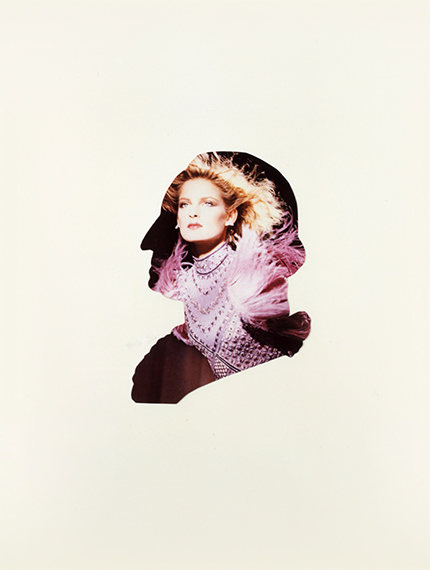
Collage on paper. Collection of Eleanor Heyman Propp.
Sherrie Levine »
1977–1988
Exhibition: 6 Jun – 29 Sep 2025
Aspen Art Museum
590 North Mill Street
CO 81611 Aspen
+1-970-9258050
Since her emergence in the late 1970s, Sherrie Levine has utilized diverse mediums to challenge conventional assumptions around autonomy, originality, and agency. Alongside contemporaries such as Cindy Sherman and Richard Prince who referenced the iconography of film and advertising, Levine turned her attention instead to the history of art. Probing the ways in which identity is generated through our relationship to images and forms, Levine’s works reckon with both the potentials and impediments of artistic production in the postmodern era.
The earliest work in this exhibition, Shoe Sale (1977), saw Levine selling seventy-five pairs of identical, store-bought children’s shoes at a storefront gallery in New York City. This established the artist’s enduring relationship with the readymade, an artistic development conceived in 1913 by Marcel Duchamp in which prefabricated objects are redefined as artworks through designatory and contextual shifts. This interest in framing connects to some of Levine’s most celebrated works, from her President Collages (1979) to her many projects replicating canonical artworks by artists ranging from Walker Evans to Egon Schiele. Strategies of appropriation—by which preexisting, mass-circulated images are re-presented with little or no modification—dismantle entrenched beliefs in monolithic, stable narratives. Levine contrarily demands a consideration and questioning of context and contingency. Seemingly straightforward acts of copying belie the enigmatic conceptual complexity at the heart of her practice. As she asked at the onset of the 1980s: “What is the same? What do we own?” Disarmingly simple, these questions remain provocative and profound.
Levine began painting in 1985, using checks, stripes, and chevrons in an array of colors. Continuing a dialogue with previous generations of (male) modernist painters but devoid of specific citations, the language of abstraction is emptied of any universal or transcendent aspirations. These paintings—produced in series, intimately scaled, eccentrically colored, and materially assertive—force the viewer to consider the aftermath of this legacy, in which the grandest of modernist ambitions have been replaced by questions of decoration, repetition, commodification, and play. On untreated expanses of plywood, Levine paints only the randomly distributed knot patches in her Knot Paintings (1985–87), allowing them to dictate the final form of the artwork. These works demonstrate an interest in chance that is present in the game board motif and are also a pun on “not painting.” Levine enacts an ultra-thin mediation in her work, through which distinguishing factors between her art and the original source material often sit beyond comprehension. Traditional beliefs in artist and artwork are upended, engendering a space that is simultaneously questioning, humorous, melancholic, and recuperative.